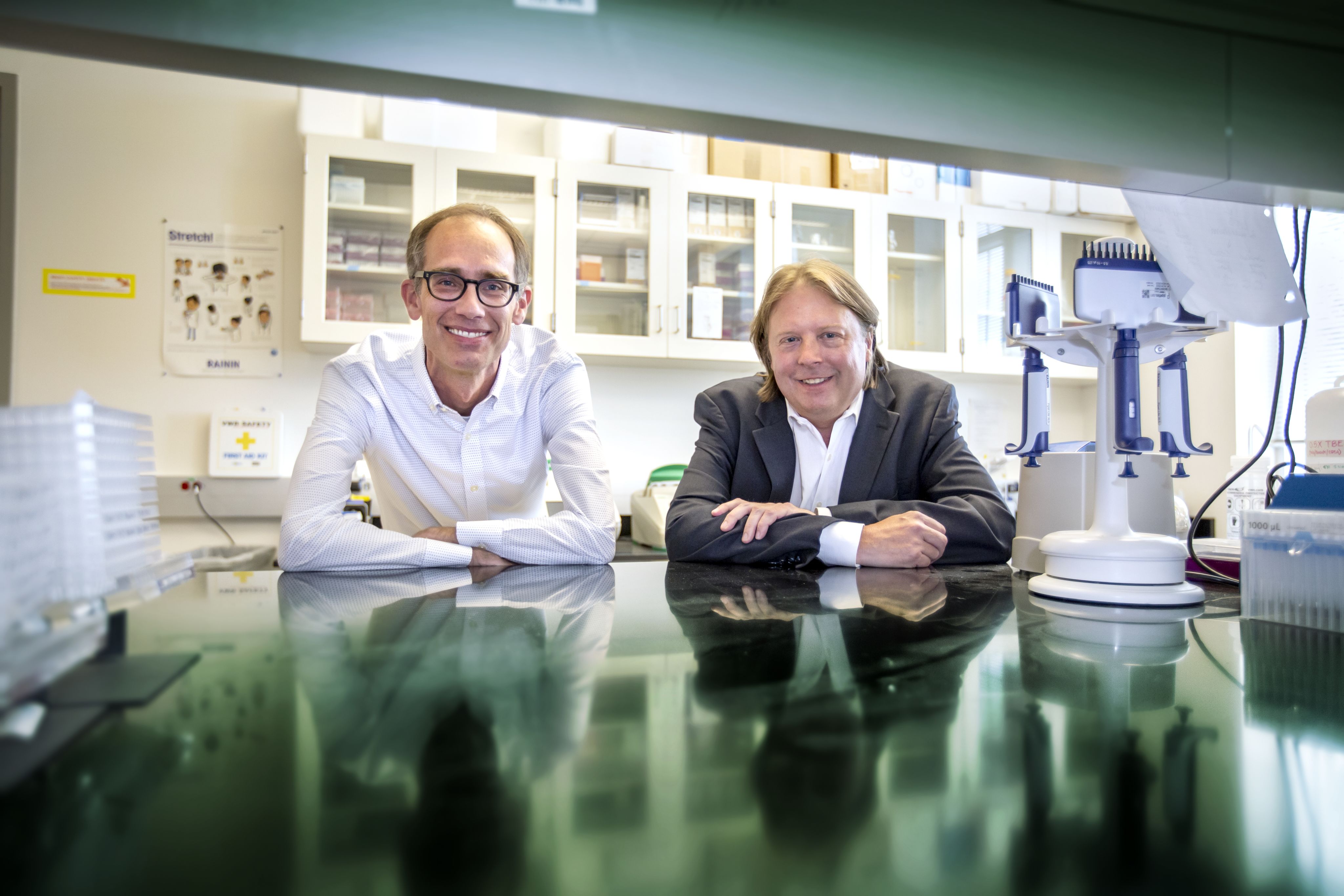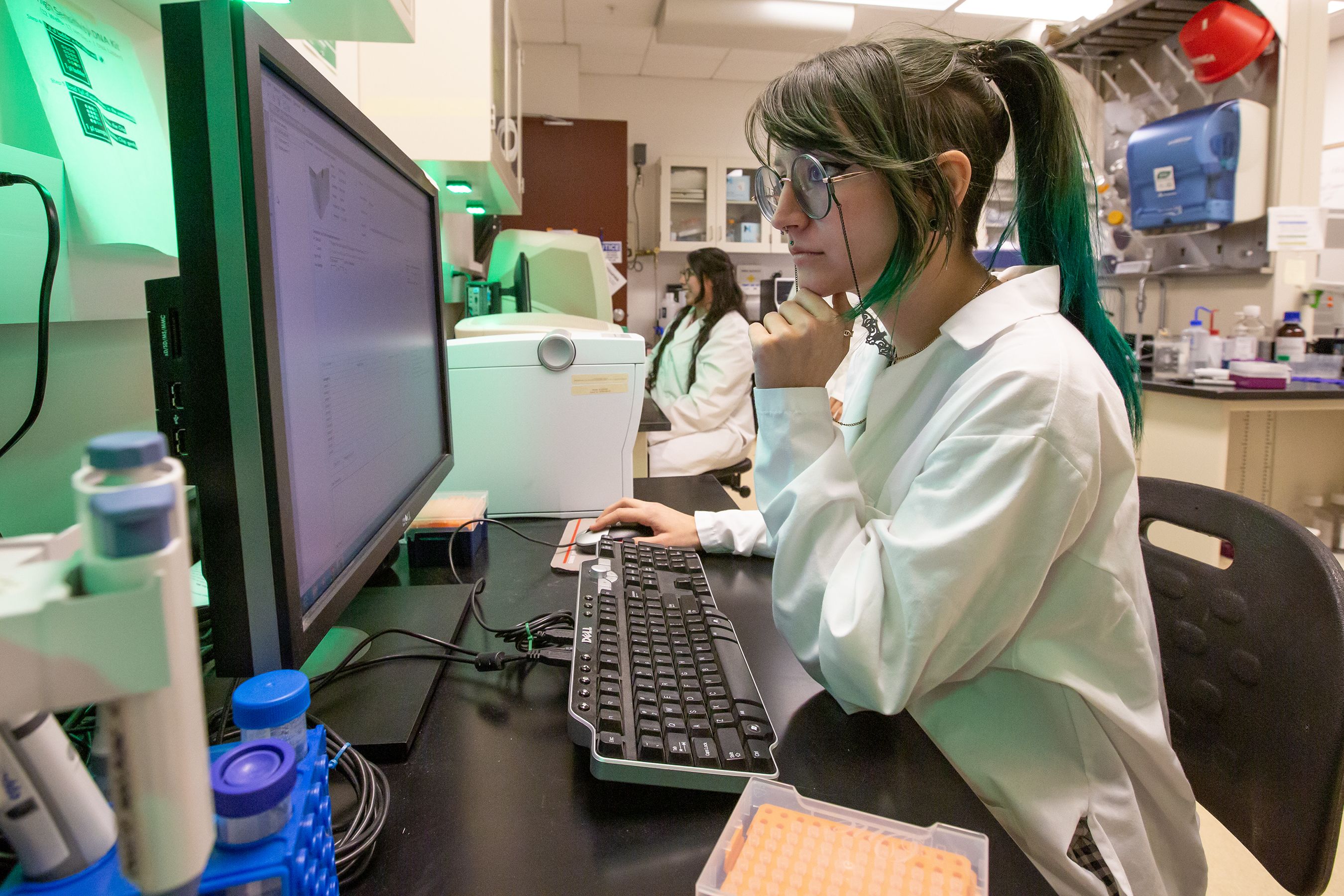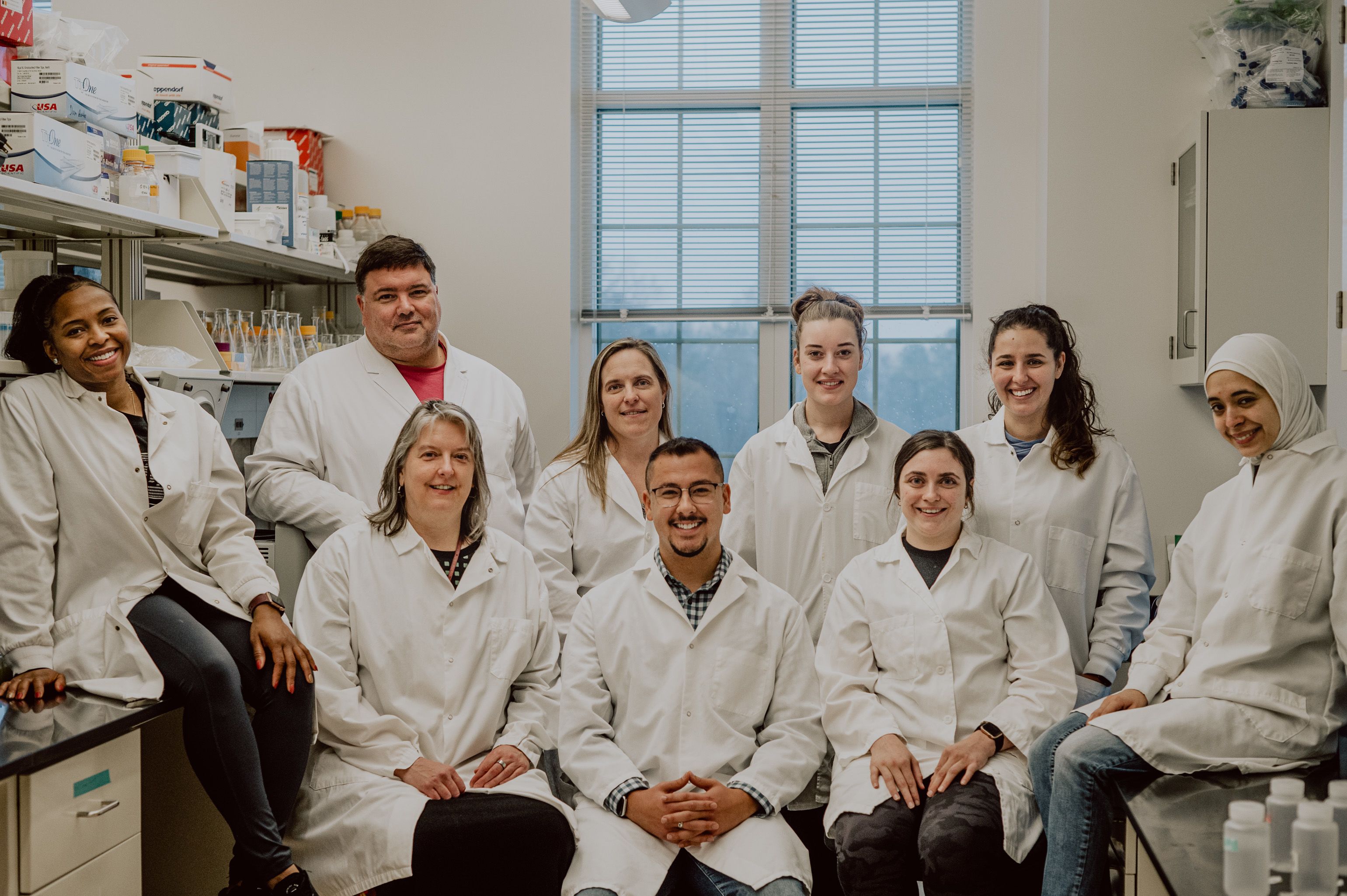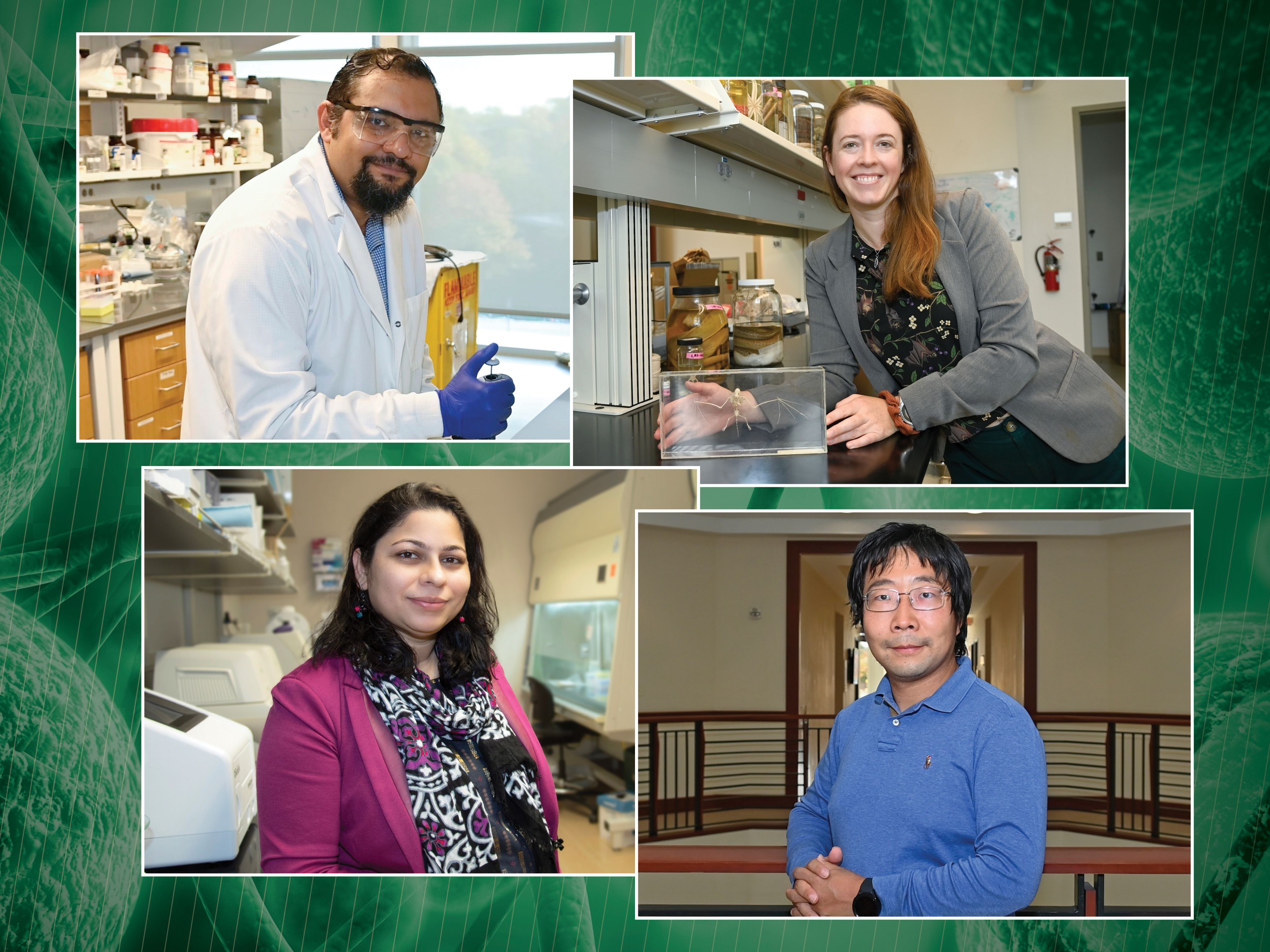De-CIPHER-ing the Future of Human Health

From infectious diseases and antibiotic resistance to food safety and ecosystem health, the threats to human health seem to be endless and complex. At UNC Charlotte, a team of researchers is finding solutions to the most vexing problems through the creative lens that only interdisciplinary collaboration can provide.
Experts from more than 20 disciplines have combined forces through CIPHER – the Center for Computational Intelligence to Predict Health and Environmental Risks. The strength of the collaboration the center fosters was seen in the University’s nationally recognized COVID-19 wastewater detection program, developed by a team of researchers that spanned bioinformatics and genomics, engineering, biology, computer science, geography and Earth sciences, and public health.
Now, the center is focused on the power of interdisciplinary teams to understand and address other emerging and long-term risks.

“We’ve proven the effectiveness of bioinformatics and genomics as scientifically important fields of study. Through CIPHER, we continue to build upon this work to have an even greater impact on society and public health.”
Maximizing the power of partnerships


WIth CIPHER, UNC Charlotte’s long standing Bioinformatics Research Center has been elevated to focus on computational and empirical research that will curb the spread of current and emerging infectious diseases. With a $10.5 million investment in infrastructure, new state-of-the-art facilities are supporting CIPHER’s innovative work in 14 computational research labs, 10 wet labs and cutting-edge spaces for students and visiting scientists.
CIPER’s co-directors, Dan Janies, the Carol Grotnes Belk Distinguished Professor of Bioinformatics and Genomics, and Adam Reitzel, professor of biological sciences, are leading a team that aims to uncover the reasons for and triggers of zoonotic shifts – the point when diseases transfer from animals to humans.
“CIPHER is enabling our researchers to work together to study organisms in a variety of environments and how they interact with humans,” said Janies.
Reitzel’s expertise in biodiversity adds value as the scientific community grapples with how to respond to changes across the globe that are impacting all species.
“Collaboration makes science fun,” he said. “Teams make the results better. We ask better questions. We take better approaches. Discoveries happen faster.”
The proof is in the, well, sewer

From COVID’s onset, UNC Charlotte colleagues from bioinformatics, environmental engineering, public health, and geography and earth sciences drove the University's effort to combat the virus through a novel approach to detecting the virus in the campus sewer system.
The results of daily wastewater sampling and testing informed decisions that helped keep the incidence of the disease on campus under control. Their work impressed public health officials and led to a partnership with the county to sample wastewater in select area neighborhoods.
Next came a 2021 AASCU Excellence and Innovation Award – and state funding for CIPHER’s facilities and new faculty. Now, support from the North Carolina Department of Health and Human Services and Cabarrus County backs the sequencing of viral variants in samples collected by the North Carolina Wastewater Monitoring Network Project and new wastewater monitoring sites in several counties.

“UNC Charlotte has demonstrated the virus can be managed – through vaccines and boosters, by using available and new technologies to surveil and test, and by partnering creatively to keep communities as safe as possible.”
The future of guarding global health

Key to CIPHER’s success – now and in the future – are researchers willing to think in new ways and take bold steps into ever-changing environments. Donning figurative “superhero capes,” they will lead their fields in identifying new ways to predict and thwart the threat of planet-wide pandemics.

These “global guardians” are among those whose work is setting a new standard for joining forces to predict and control future widespread outbreaks of infectious disease.
Juan Vivero-Escoto/Bacteria Destroyer
“With a light source applied to treated nanoparticles, they become activated and degraded, then release silver ions that kill antibiotic-resistant bacteria and genes. We are killing bacteria more effectively than with antibiotics.”
“As bats were considered the probable source of the coronavirus, the molecular evolution of their sense of smell became especially relevant. What makes bats special is how their noses allow them to transmit coronavirus but not get sick themselves.”
Mariya Munir/Wastewater Detective
“Tracking COVID markers in wastewater gives public health officials real-time data–and serves as an early warning sign that COVID is spreading in a community. It’s a good public health tool that will help monitor not just COVID-19 but any pathogen or contaminant in the environment.”
“As we analyze and integrate information to better understand how infectious diseases spread in our communities, we learn more about the dynamics of information and misinformation that often surround communicable diseases.Connecting the dots among animals, human disease and public health gets us closer to understanding the role of communication in disease trajectory.”

This content was paid for and created by the University of North Carolina at Charlotte. The editorial staff of The Chronicle had no role in its preparation. Find out more about paid content.

